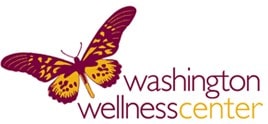A new year typically brings new resolutions. While making resolutions is easy, sticking with them is not. Exercise-related resolutions consistently make the top 10 lists, but up to 80 percent of resolutions to be healthier, including promises to exercise more, are tossed aside by February. You know physical activity is good for you but that alone isn’t always enough to get or keep you moving. Fewer than half of American adults are as active as they should be.
The Centers for Disease Control and Prevention recommend that adults get 150 minutes of moderate-intensity physical activity every week. So, let’s think about physical activity in a different way.
Benefits to all parts of your physical body
Research shows that every single system in the body benefits when you are more active. You sleep better and have more energy. You think more clearly and remember better. Your body also responds better to insulin, which lowers your risk of diabetes. All of that is in addition to the better-known benefits of physical activity. If you want to live a long and healthy life, you need to be active.
Brisk walking provides health benefits similar to running, and probably more social benefits. Plus, your risk of injury is much lower. And you can walk for free from almost anywhere like your neighborhood or office. A 22-minute walk every day would put you just over 150 minutes every week.
Setting other goals for the new year
Many experts who work with clients or patients to set goals using the acronym SMART (specific, measurable, attainable, realistic, and time-based) to guide them. This simple method could help you achieve a goal to sit less and move more in the New Year.
One of the best ways to keep up with your efforts is to track your progress. You can do it with pen and paper, in a journal, or in one of many smartphone apps. As you see yourself making progress, it can be easier to keep up the routine.
Expand your view of exercise
Another thing to keep in mind is that you don’t have to go a gym to get moving. There are plenty of ways to make exercise part of your lifestyle. Get the family involved, play tag, or walk to your favorite hangout. Park farther away from your workplace, the store, or the library, walk during your breaks at work and over your lunch period.
As you undertake the significant change from being inactive to becoming active, understand that setbacks happen. Don’t let one slip-up derail your whole goal. When possible, have a backup plan to deal with barriers like weather or time constraints. And celebrate the small victories you make toward reaching longer-term goals.
For information about exercising and improving your health, contact us at Washington Wellness Center.

